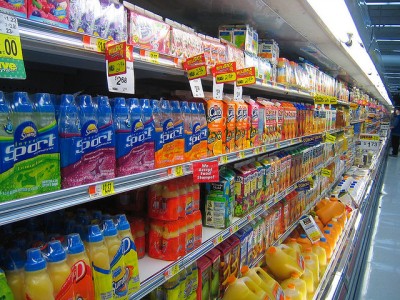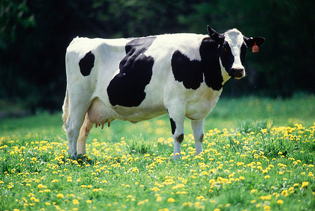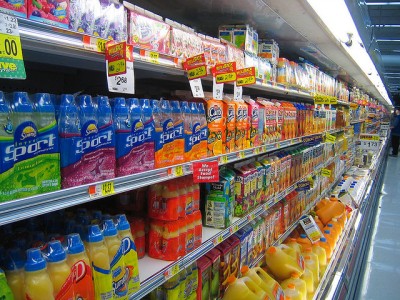 Is this your idea of a great place? Didn’t think so.Photo: Robert TerrellDavid Roberts has been sketching out a positive, unifying agenda for progressives under the banner of what he calls “great places.” It isn’t enough, David argues, to rail against the snarling philistinism of Sarah Palin or engage endlessly in the “decrepit political arguments that dominate U.S. politics.” Instead, he urges us to:
Is this your idea of a great place? Didn’t think so.Photo: Robert TerrellDavid Roberts has been sketching out a positive, unifying agenda for progressives under the banner of what he calls “great places.” It isn’t enough, David argues, to rail against the snarling philistinism of Sarah Palin or engage endlessly in the “decrepit political arguments that dominate U.S. politics.” Instead, he urges us to:
see things with fresh eyes, to think anew about the unique challenges and opportunities of our historical moment. We’re in a time of profound, rapid change and we need an agenda that looks to the future with purpose and confidence.
Secure · Tax deductible · Takes 45 SecondsSecure · Tax deductible · Takes 45 Seconds
David’s project resonates, because he’s not pushing us to imagine some joyless future in which everyone grimly pursues maximum eco-virtue. Rather, he asks:
what if ecological activism meant figuring out how to make living together more fun? What if “going green” meant making cities more sociable, exciting, rewarding places to live? What if, instead of making people feel guilty and give up things they like, your job as as a green activist was to delight them?
David asked me to weigh in with just such a vision on food. I do so with a heavy heart, because this marks the end of my tenure as a Grist staffer after nearly five years of proud duty. Startinmarg June 8, I’ll be writing for Mother Jones. My time at Grist has given me a haven from which to think long and hard about the food system and its future, and to hone and refine my ideas by scribbling tens of thousands of words. For that I am endlessly grateful to my Grist colleagues, and also to everyone who has ever clicked on one of my posts. When I started at Grist in 2006, it seemed exotic and risky for an environmental ‘zine to invest in a fulltime food writer. Today, the practice is commonplace. Grist’s leaders and readers helped blaze that trail.
David’s request is an opportunity to draw a rough sketch for what a sane food future might look like. Following an example he has set over many years, I have decided to break my thoughts on the topic into two posts. This need not be an exercise in crude utopianism — the practice of imagining a “no place” (literal translation of utopia from Greek) that has never existed and has no direct relationship with the world as it is. To engage in such thinking is to enter the realm of fantasy. A more robust utopian strategy can be found in Marx (whose own utopian musings were actually pretty scant and vague) in his wonderful essay “The Eighteenth Brumaire of Louis Bonaparte“: “Men make their own history, but they do not make it just as they please; they do not make it under circumstances chosen by themselves, but under circumstances directly encountered, given, and transmitted from the past.”
So, there’s no clean historical break; we do our best, we try to move forward, working with what we’ve got. With that insight in mind, I’ll start by looking at how the food system as currently structured creates the opposite of “great places”; then, in part two, I’ll move to some alternatives that are emerging to it, and speculate on how those alternatives might be bolstered into something like general reality.
Our food system is characterized by massive and increasing consolidation. At the top of the heap sits a handful of mega-retailers. In 1992, the eight largest players rung up about a quarter of all retail grocery sales in the United States. By 2008, they were snatching fully half of all sales, the USDA reports. What happened in between was the emergence of Walmart as a grocery player in the early 1990s. The company immediately imposed its “everyday low prices” business model on food, and promptly set about doing to its food suppliers what it had already done to makers of brooms and dish drainers: relentlessly squeeze them on price.
As a result, food suppliers have had to scale up in response. The most notorious example is meat, where just four companies — Tyson, JBS, Smithfield, and Cargill — now essentially control the market in beef, pork, and chicken. But other examples abound. In breakfast cereals, snacks, soda, and beer, just four companies own 75 percent or more of the market. And a single company, Dean Foods, processes about a third of fluid milk.
I’ve written plenty about the dire environmental and public-health effects of this hyperconsolidation. Squeezed on price, companies scramble to slash costs in order to maintain quarterly profit growth — and that pressure encourages them to cut corners on things like sanitation and pollution control.
But consider the effect on communities and the job market. Again, meat makes a telling example. In the wake of publication of The Jungle in 1906, the U.S. meat industry underwent a variety of reforms, one of which was the unionization of slaughterhouses. By mid-century, the meatpacking industry provided a proper middle-class living to thousands of Americans. As Human Rights Watch put it in its excellent 2005 report “Blood, Sweat, and Fear: Workers’ Rights in U.S. Meat and Poultry Plants“:
For about forty years in the middle of the twentieth century, from the 1930s to the 1970s, meatpacking workers’ pay and conditions improved. Master contracts covering the industry raised wages and safety standards. In the 1960s and 1970s, meatpacking workers’ pay and conditions approximated those of auto, steel, and other industrial laborers who worked hard in their plants and through their unions to attain steady jobs with good wages and benefits. Meatpackers’ wages remained substantially higher than the average manufacturing sector wage — 15 percent higher in 1960, 19 percent higher in 1970, 17 percent higher in 1980.
Today, of course, after decades of union-busting and consolidation, meatpacking jobs rank among the very lowest paid and most dangerous — indeed, conditions have gotten so dire that the Human Rights Watch, usually fixated on the misdeeds of tinpot dictators, saw fit to issue that scathing report.
And as the meatpackers consolidated and waged war on labor in order to protect profit margins, it wasn’t just slaughterhouse workers who paid the price. An entire trade has evaporated: that of the butcher. A half century ago, virtually every community and even neighborhood in America supported an independent butcher shop. In Manhattan at mid-century, “there was a butcher on every block of Broadway in Manhattan from 100th Street down to the 60s,” reports Pete Wells in Food and Wine magazine. Then, as supermarkets began to gobble up market share, butcher shops came under severe pressure, and skilled butchers migrated from their own shops to the supermarket meat counter. Today, supermarkets have largely dispensed with skilled butchers altogether — they rely heavily on “case-ready” meat from the the giant meatpackers. Wells reports:
“The butchers used to be the highest-paid guys in the store,” says Bruce Aidells, who wrote The Complete Meat Cookbook. “Now clerks put the meat on the shelves and they get the same low wage as everybody else.” It might seem that the butchers have simply moved from the stores to the slaughterhouses, but in fact meat packers have perfected an assembly-line system in which unskilled workers repeat a single cutting motion all day long.
All across the food industry, the story has been the same: the systematic de-skilling of labor and the resulting plunge in wages. Job growth in the restaurant industry has far outstripped that of the broader economy, a report [PDF] from the Restaurant Opportunities Centers United shows; but wages have lagged badly. Today, the national median hourly wage for food preparation and service workers stands at just $8.89 including tips — and nearly 90 percent of industry workers lack health insurance. If any group in the entire economy has it worse than restaurant employees or slaughterhouse workers, it would have to be farm workers.
What have we gained from this systematic pauperization of the food-industry work force? True, food as a percentage of income is cheaper here than anywhere else on the planet; but what about quality and public health? As I’ve shown before, access to cheap food does not translate to higher quality of life — in fact, quite the opposite. Measured in terms of pure cost, Walmart has brought great efficiency to the food system. But even if you fetishize cost efficiency as the measure of success, can you really get excited about grocery shopping at a Walmart? Does the rise of mega food-retailing build robust communities that people value — or represent the erasure of communities?
Our food system has evolved into a vehicle for impoverishing workers and transferring vast sums of wealth from communities to shareholders in a few large companies, all the while churning out huge amounts of health-destroying food. But food can also be a tool to build health and wealth within communities — and indeed is doing just that in localities throughout the country and across the globe. And that is the topic of part two.




